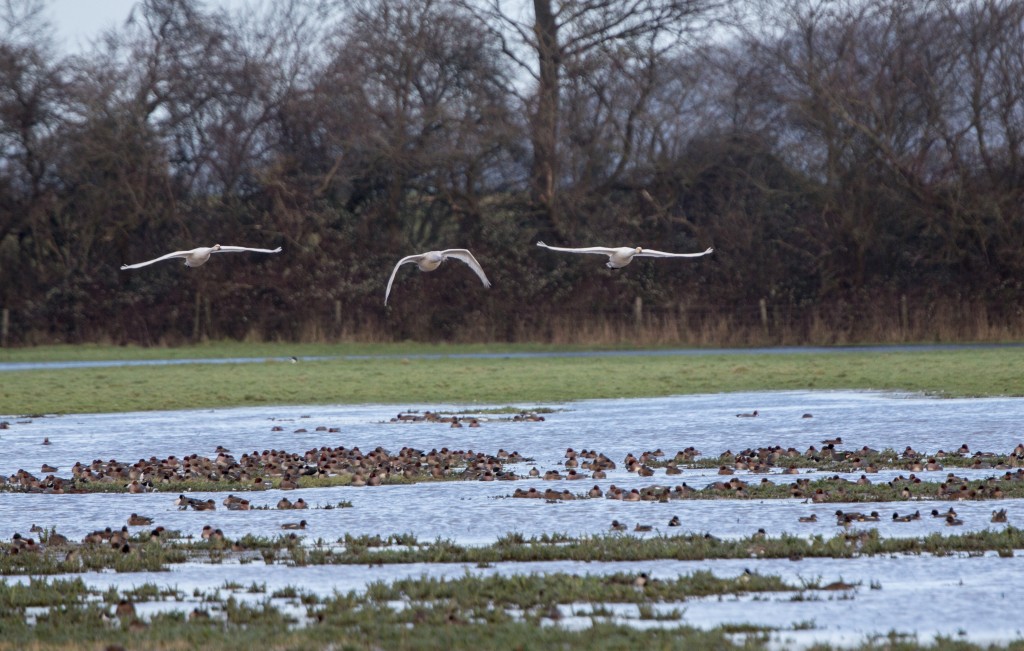Nice weather for ducks!

Record numbers of water birds are being seen at some WWT Wetland Centres due to the mild, wet winter.
While heavy rains and flooding are causing misery for thousands of people, some wetland species are actually benefitting from sodden ground while it’s a mixed outlook for others.
WWT manages 2,600 hectares of wetland habitat at nine key locations across the UK to attract and support as many species of wildlife as possible including birds, mammals and plants.

WWT Slimbridge Wetland Centre in Gloucestershire has had around double the number of wild birds its seen in recent colder winters. There was a record number of shoveler duck – 323 in one day – and a near record of around 4,000 golden plover. Reserve Warden Dave Paynter said:
“Because our wetlands aren’t frozen, we’re getting record numbers of some overwintering species that don’t need to scarper off to France and Spain in search of unfrozen water to feed in.
“Whirling flocks of thousands of birds across the wetlands catch the low winter light beautifully – it’s great for photos or to just breathe in the view.
“The birds love their new wet feeding grounds. The insects rise up out of the soil to escape the water and all the seeds float out; there are lots of hungry beaks waiting to snap them up.”
WWT Caerlaverock Wetland Centre on the Solway Firth has had the highest numbers of birds seen in nearly 20 years, with almost 9,000 visiting on one day alone. Reserve Warden Joe Bilous said:
“It was quite incredible really. The tide completely cut off one of our hides by a good two or three feet of water, I ended up rescuing our sheep and also a few visitors from the hide so it was just unbelievable.
At WWT Arundel Wetland Centre in Sussex there were some notable booms in numbers including more than double the usual dozen gadwall, with 40 being seen on one day. But the standing water was deeper at Arundel than other Wetland Centres which caused problems for some of the wetland mammals. Grounds Manager Paul Stevens said:
“The waters rose gradually, hopefully allowing small mammals a chance to move out of the way. Staff saw water voles heading for higher ground at the back of the reedbeds.
“We hope the warmer weather during the flooding meant that hibernating dormice were in a light torpor and were easily awakened by the rising waters near their nests in the hedgerows.
“We found a young mole swimming along what was our access road behind Wetland Discovery. The mole found a rotting tree and tried to burrow inside. We carried him to higher ground where he safely dug into the earth.”